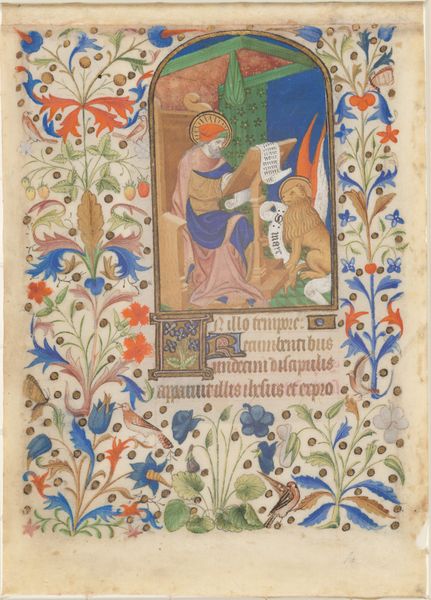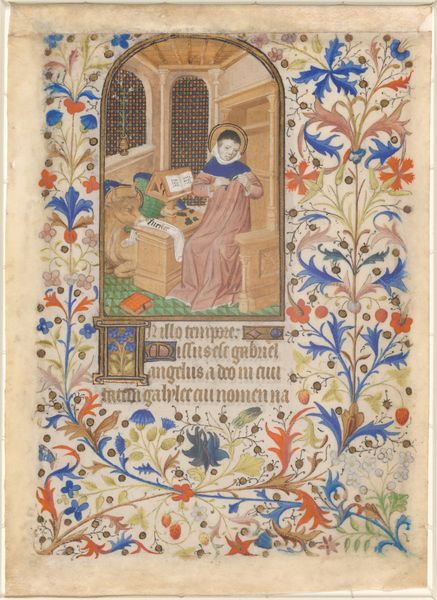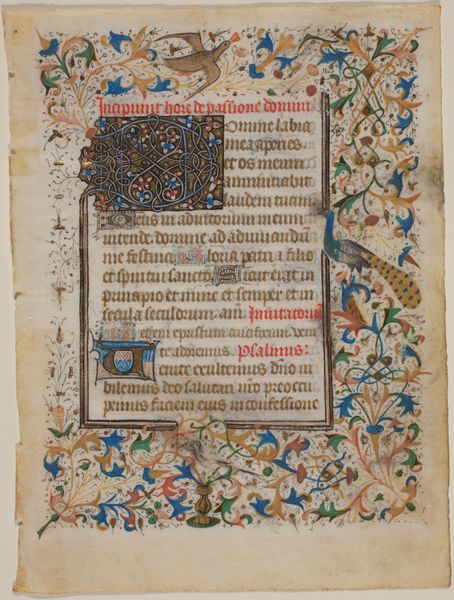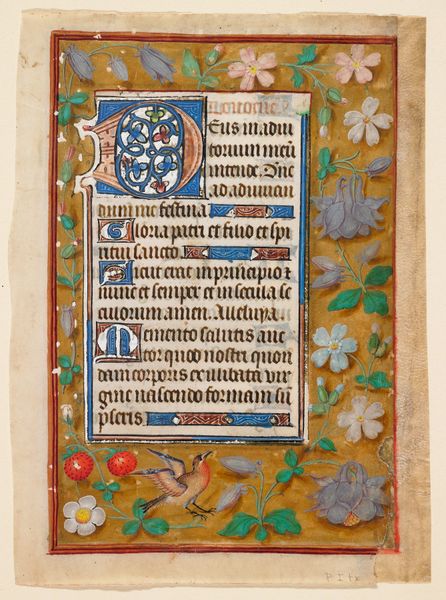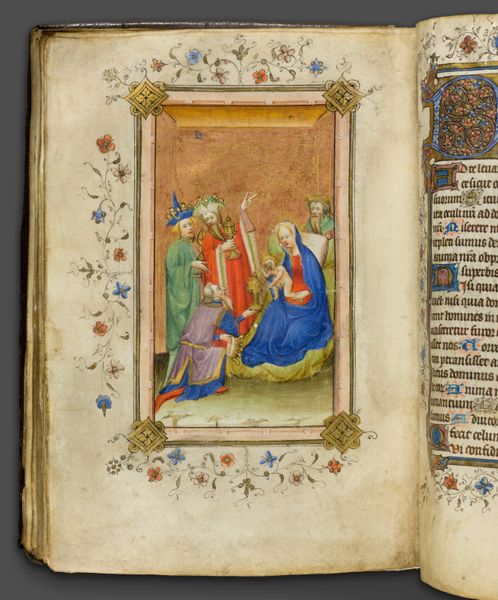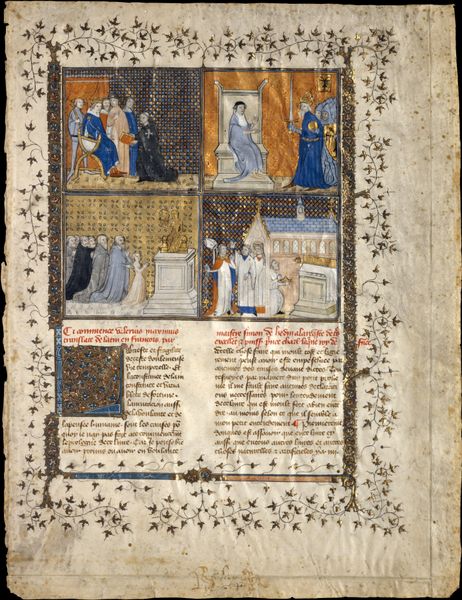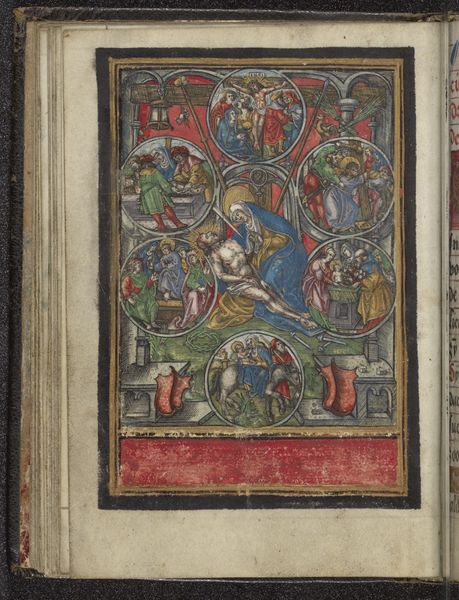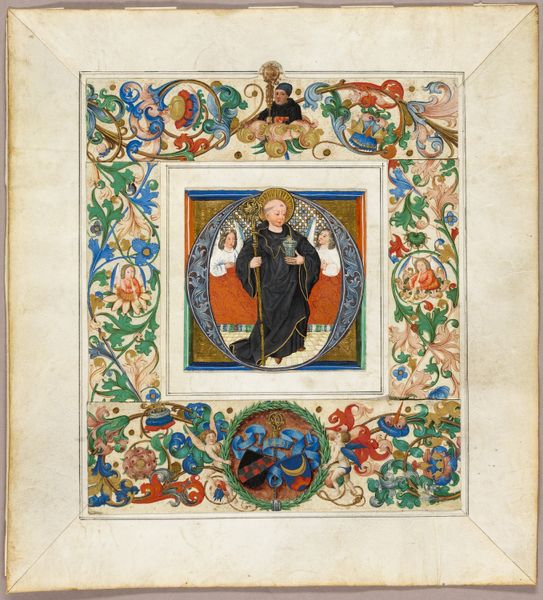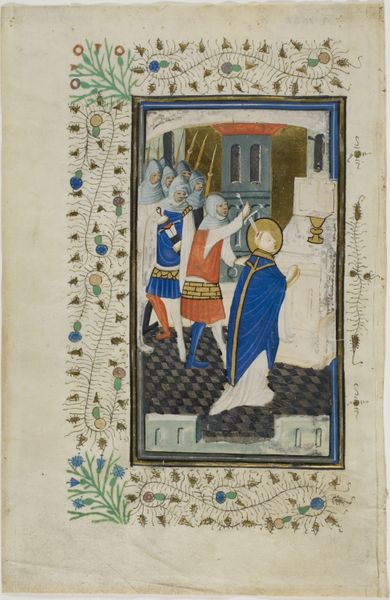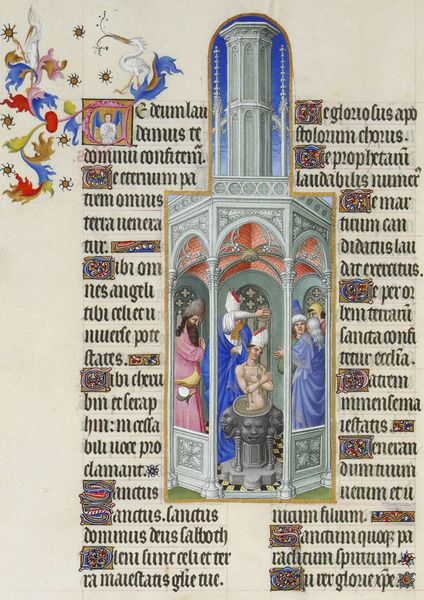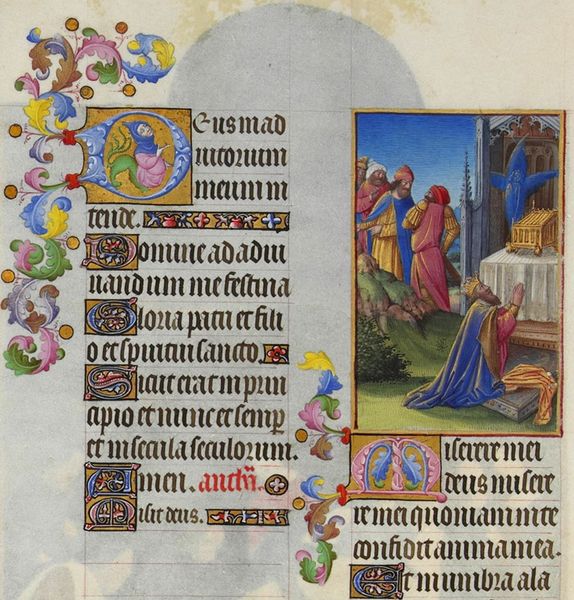
drawing, watercolor
#
drawing
#
medieval
#
water colours
#
narrative-art
#
figuration
#
watercolor
#
coloured pencil
#
international-gothic
#
miniature
#
watercolor
Dimensions: overall: 17.8 x 12.5 cm (7 x 4 15/16 in.)
Copyright: National Gallery of Art: CC0 1.0
Curator: Let's turn our attention to this drawing titled "Saint John," created circa 1425-1435. It is rendered with watercolor, showcasing a delicate miniature scene from the Medieval era. Editor: It strikes me as extraordinarily serene. The cool blues and greens dominating the figure and architectural elements evoke a sense of calm contemplation, only punctuated by those warmer floral colors along the frame. Curator: The International Gothic style is evident in the detailed craftsmanship and decorative elements, as well as the medium itself. Watercolors during this period were often produced by monastic workshops as part of the labor-intensive illuminated manuscripts. Think about the material acquisition of the pigments, and the process required. Editor: Precisely. The way the colors interact and are distributed across the scene definitely calls to mind manuscripts. Take for example the figure’s robe, with such deep blue hues. Also how this tonality highlights the halos above Saint John in service of emphasizing divine qualities. Curator: And this artistic choice to work in miniature demands a specific kind of focus and a deliberate speed of working; watercolor's finicky nature required planning in material preparation. This resonates with ideas around skilled craftsmanship that are so central to the work, that perhaps went hand in hand in its commission to begin with. Editor: It’s certainly effective; the detail is captivating! It draws the eye towards a central illuminated figure writing on a scroll. This work also includes several allegorical figures around the subject such as an eagle for inspiration and scrolls to signify words or documents. Curator: Consider the patrons who commissioned and consumed these artworks: the access to such rich materials dictated certain socio-economic standing within Medieval society. Editor: The colors are used here to guide you toward meaning but that material context you mention underscores just how this composition visually serves those aims. Curator: Absolutely. Considering both materiality and composition we start seeing "Saint John" and the broader visual culture in terms of the means of their production and distribution. Editor: And viewing these elements together enriches our understanding, no question. It balances that crucial understanding of intention in visual languages, too. Thank you for providing more context!
Comments
No comments
Be the first to comment and join the conversation on the ultimate creative platform.
